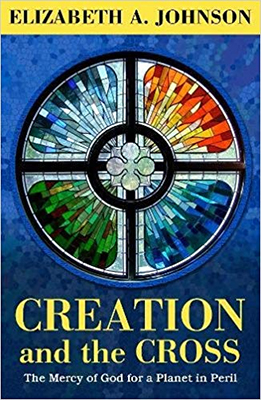 In her latest book, Creation and the Cross, Sister of St Joseph Elizabeth Johnson, one of our top US theologians, brings together our Precious Blood spirituality and responsible use and care of our planet — emergent directives one and four! People equate redemption with pardon for sins, gained by Jesus’ death. But this focus on sin excludes the whole created world since it did not sin. Johnson sets out to show how a proper under-standing of redemption embraces every created thing.
In her latest book, Creation and the Cross, Sister of St Joseph Elizabeth Johnson, one of our top US theologians, brings together our Precious Blood spirituality and responsible use and care of our planet — emergent directives one and four! People equate redemption with pardon for sins, gained by Jesus’ death. But this focus on sin excludes the whole created world since it did not sin. Johnson sets out to show how a proper under-standing of redemption embraces every created thing.
But first she must dismantle satisfaction theology (see the article “Being Saved” in this issue of Grassroots). Since Anselm’s 1098 work Cur Deus Homo (Why a God Man?) made satisfaction theology dominant, she adopts Anselm’s own writing device to demolish it. She invents a dialogue partner “Clara,” who like Anselm’s Boso represents the common inquiring person — or us! The whole book is therefore a conversation between Elizabeth and “Clara,” which helps make this theology book easier to read.
The first part of the book discusses Anselm’s satisfaction theology and its historical contexts. Not only are these contexts foreign to us (e.g., feudal honor, ransom practice), they do injustice to our understanding of God and self. Therefore satisfaction theology is erroneous and harmful, she says, and turns to her understanding of salvation in the wider context of creation itself.
First she gives us a solid scriptural basis. Perhaps you will want to start your reading with Book II, a moving discussion of Isaiah 40-55 and the names for God in Hebrew. Compassion is the chief attribute of God.“A God of astonishing creative power seen in the magnificence of the skies and the earth, YHWH is merciful and gracious, delivering people from the hand of their oppressors, forgiving sin, and interacting with the world with a relentless concern for justice.” That is redemption, and we are active participants in it (see section 2.6). And so was Jesus, with his mission. “When a mission gets its grip on your heart, you faithfully stay the course, regardless … a passionate sense of right and wrong and love for others prevents you from doing otherwise.” That is why Jesus died. God’s creative power “in the beginning” then operates in resurrection and is continuing to operate until the end. The resurrection reveals God’s creative power anew. “This is what is essentially salvific … the resurrection lifted the Crucified One into the role of the Christ, the person chosen by God to usher in a new age of redemption …”
After a rich discussion of the post-resurrection metaphors Christians developed to speak of being saved, Johnson turns to the created universe in Book V, “God of All Flesh: Deep Incarnation.” Rather than the synoptic Gospels, she uses the Gospel of John. It begins “in heaven with God as Word creating the world, and traces this Word’s descent into the world in Jesus Christ …” The Word became flesh, not human or a man, and “flesh” is material substance that includes molecules and chemicals and the star dust of the universe itself. Section 5.5 draws on the Sophia texts of the Wisdom tradition of Hebrew scripture, the Hebrew hinge that allowed belief in incarnation to take root in the Christian tradition. Then she continues: “The flesh that the Word of God became as a particular human being is part of the tree of evolving life on earth, which in turn is part of the vast body of the cosmos.” “… In Christ, God enters into the biological tissue of creation in order to share the fate of biological existence … God shares the life conditions of foxes and sparrows, grass and trees, soil and moisture (quoting Niels Gregersen).” “… The Creator of all flesh is silently present with creatures in their pain and dying … accompanied in their anguish and dying with a love that does not snap off just because they are in trouble. The cross gives warrant for locating the compassion of God right at the center of their affliction.” God in Christ accompanies, and invites us into a mission of accompaniment with suffering people and all creatures.
In Book VI Johnson uses Pope Francis’ “Laudato Si” encyclical to apply the theology of accompaniment to the environmental crisis of today. For “coming from the same Source and being loved with the same ineffable affection, all species form together one splendid universal communion (LS 200).”
By Sister Mary Garascia
Assembly Directive: Continue to articulate and integrate our Spirituality in our sharing among ourselves and with others.




